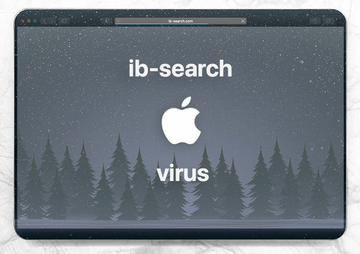Here is a hands-on description of the ib-search Mac virus, a browser redirect threat that overrides its victim’s online preferences to push dubious services.
No matter how well-secured macOS is by design, it becomes low-hanging fruit even if a user briefly loses vigilance. The vast majority of present-day digital threats infiltrate systems because they get a seal of approval to do so, although would-be victims are clueless about it. What seems to be a garden-variety freeware app installer can be a dangerous bundle in disguise. This is how the ib-search virus gains a foothold on Macs. It bypasses a distinct authorization stage while slithering its way into machines under the camouflage of an ostensibly harmless app. Once inside, the miscreant code subordinates Safari, Google Chrome, and Mozilla Firefox, making the user’s preferred search engine default to ib-search.com without permission.

As a result of these dodgy manipulations, the malicious entity incessantly forwards the victim’s web searches to the wrong site. As per some reports, the resulting page comes up blank, which seems to make no sense in the context of this cybercrime scheme. This discrepancy most likely occurs due to server-side misconfiguration. It’s a drag for anyone affected, anyway. In some cases, though, the intercepted traffic arrives at a knock-off search provider that mimics the look and feel of the average service of this sort. Regardless of the specific scenario, several sketchy URLs are quietly resolved along the way. Although such hits are momentary, they play a nontrivial role in the whole stratagem by accumulating a large amount of fraudulent traffic that pays off down the line.
Ib-search may re-infect your Mac multiple times unless you delete all of its fragments, including hidden ones. Therefore, it is recommended to download Combo Cleaner and scan your system for these stubborn files. This way, you may reduce the cleanup time from hours to minutes.
Download Now Learn how Combo Cleaner works. If the utility spots malicious code, you will need to buy a license to get rid of it.Persistence is one of the pivots of the ib-search virus campaign. This quirk of the infection hinges on a mixture of a Mac configuration profile and deep system penetration at the level of LaunchAgents and LaunchDaemons. In the aftermath of this, the victims are stuck with incorrect settings that cannot be undone through regular tweaks of the browser preferences. The device profile trick is particularly impactful as it allows the pest to manage the search engine customizations as if an enterprise network administrator had specified them. Therefore, deleting this element of the hoax is a critical prerogative for effective cleanup.
Aside from the tip of the iceberg manifested as browser redirecting frenzy, the ib-search virus entails less conspicuous, yet potentially unsettling pitfalls. This attack is also a privacy risk because the unwanted app is continuously monitoring the victim’s online activities in the background. It spawns tracking cookies to snoop on the web browsing history, and it also profiles the user by harvesting such details as the operating system version, IP address, and hardware specifications. This is coveted information for third parties that engage in unethical targeted advertising. It’s a serious privacy concern, too.
Avoiding the ib-search Mac virus is entirely a matter of safe software installation practices. Always opt out of the express option in installers downloaded from outside the official App Store – this way, you can see the real composition of the package and either deselect the redundant items or quit the setup altogether. For those who have slipped up and are experiencing unbearable redirects to ib-search, the following steps will help eliminate the threat without a trace.
Ib-search virus manual removal for Mac
The steps listed below will walk you through the removal of this malicious application. Be sure to follow the instructions in the specified order.
Expand the Go menu in your Mac’s Finder bar and select Utilities as shown below.
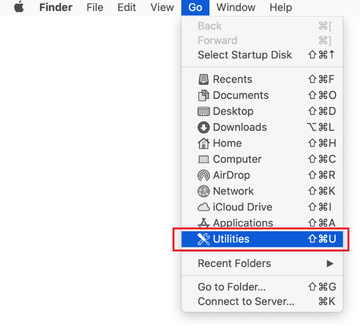
Locate the Activity Monitor icon on the Utilities screen and double-click on it.
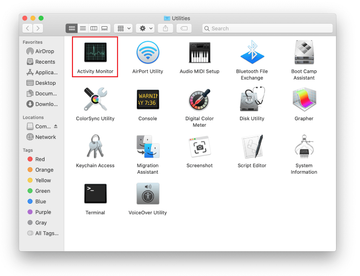
In the Activity Monitor app, look for a process that appears suspicious. To narrow down your search, focus on unfamiliar resource-intensive entries on the list. Keep in mind that its name isn’t necessarily related to the way the threat is manifesting itself, so you’ll need to trust your own judgement. If you pinpoint the culprit, select it and click on the Stop icon in the upper left-hand corner of the screen.
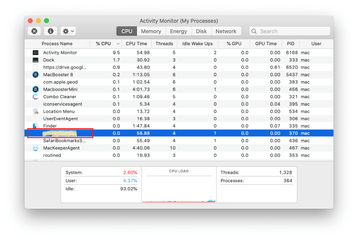
When a follow-up dialog pops up asking if you are sure you want to quit the troublemaking process, select the Force Quit option.
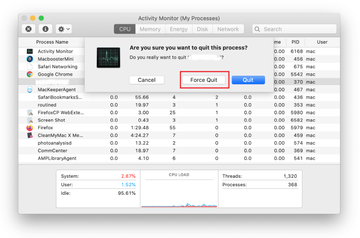
Click on the Go menu icon in the Finder again and select Go to Folder. You can as well use the Command-Shift-G keyboard shortcut.
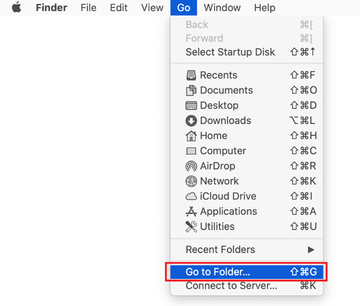
Type /Library/LaunchAgents in the folder search dialog and click on the Go button.

Examine the contents of the LaunchAgents folder for dubious-looking items. Be advised that the names of files spawned by malware may give no clear clues that they are malicious, so you should look for recently added entities that appear to deviate from the norm.
As an illustration, here are several examples of LaunchAgents related to mainstream Mac infections: com.pcv.hlpramc.plist, com.updater.mcy.plist, com.avickUpd.plist, and com.msp.agent.plist. If you spot files that don’t belong on the list, go ahead and drag them to the Trash.
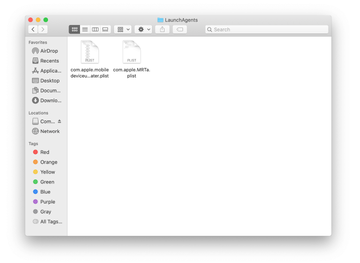
Use the Go to Folder lookup feature again to navigate to the folder named ~/Library/Application Support (note the tilde symbol prepended to the path).
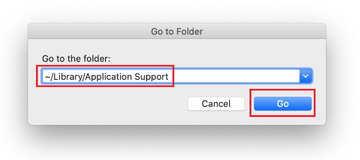
When the Application Support directory is opened, identify recently generated suspicious folders in it and send them to the Trash. A quick tip is to look for items whose names have nothing to do with Apple products or apps you knowingly installed. A few examples of known-malicious folder names are Quick Mac Booster, IdeaShared, and ProgressMatch.
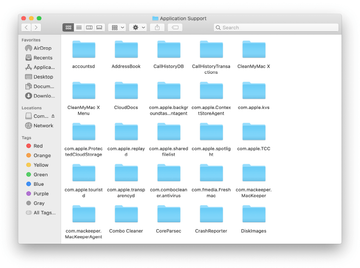
Enter ~/Library/LaunchAgents string (don’t forget to include the tilde character) in the Go to Folder search area.
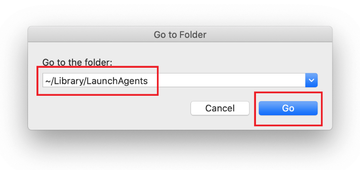
The system will display LaunchAgents residing in the current user’s Home directory. Look for dodgy items related to ib-search virus (see logic highlighted in subsections above) and drag the suspects to the Trash.
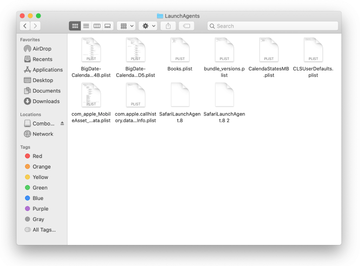
Type /Library/LaunchDaemons in the Go to Folder search field.

In the LaunchDaemons path, try to pinpoint the files the malware is using for persistence. Several examples of such items cropped by Mac infections are com.pplauncher.plist, com.startup.plist, and com.ExpertModuleSearchDaemon.plist. Delete the sketchy files immediately.
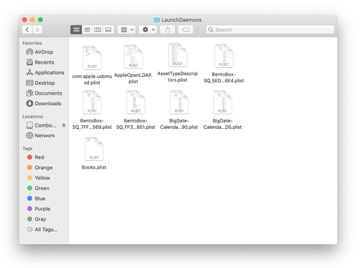
Click on the Go menu icon in your Mac’s Finder and select Applications on the list.
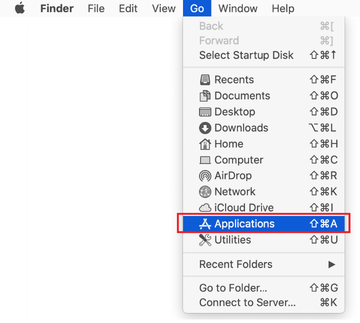
Find the app that clearly doesn’t belong there and move it to the Trash. If this action requires your admin password for confirmation, go ahead and enter it.
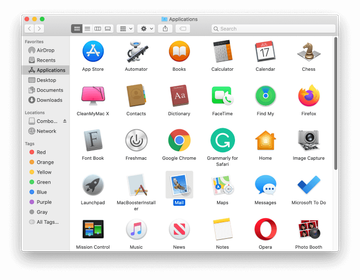
Expand the Apple menu and select System Preferences.
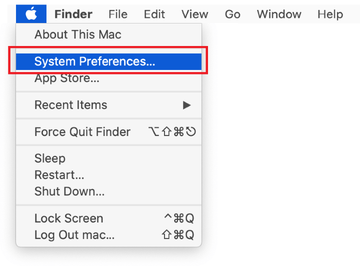
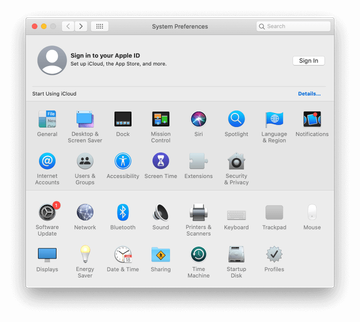
Proceed to Users & Groups and click on the Login Items tab.
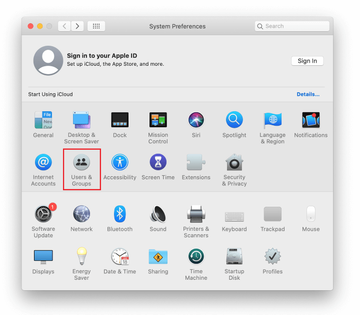
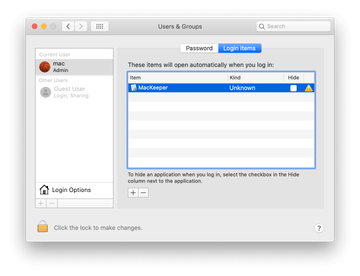
Now select Profiles under System Preferences. Look for a malicious item in the left-hand sidebar. Several examples of configuration profiles created by Mac adware include TechSignalSearch, MainSearchPlatform, AdminPrefs, and Chrome Settings. Select the offending entity and click on the minus sign at the bottom to eliminate it.
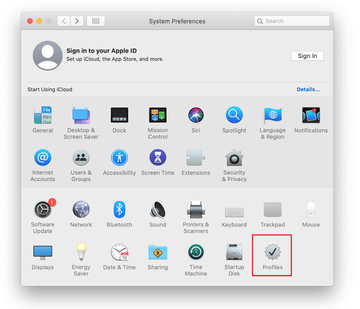
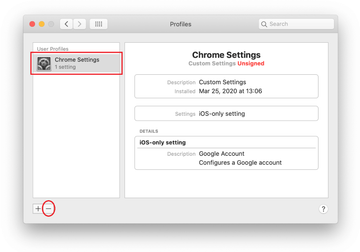
Get rid of ib-search virus in web browser on Mac
To begin with, the web browser settings taken over by the ib-search virus should be restored to their default values. Although this will clear most of your customizations, web surfing history, and all temporary data stored by websites, the malicious interference should be terminated likewise. The overview of the steps for completing this procedure is as follows:
- Remove ib-search virus from Safari
Open the browser and go to Safari menu. Select Preferences in the drop-down list.
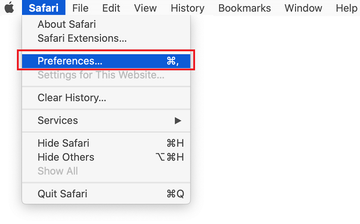
Once the Preferences screen appears, click on the Advanced tab and enable the option saying “Show Develop menu in menu bar”.
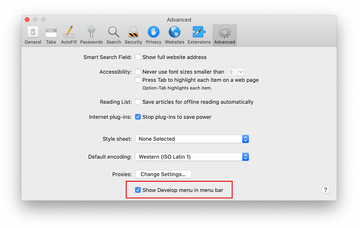
Now that the Develop entry has been added to the Safari menu, expand it and click on Empty Caches.
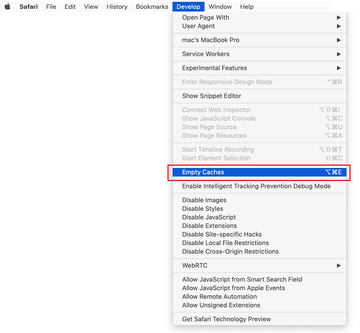
Now select History in the Safari menu and click on Clear History in the drop-down list.
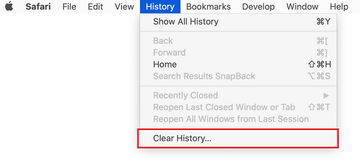
Safari will display a dialog asking you to specify the period of time this action will apply to. Select all history to ensure a maximum effect. Click on the Clear History button to confirm and exit.
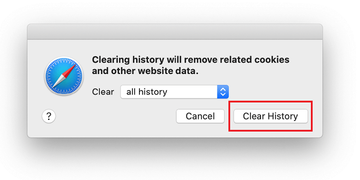
Go back to the Safari Preferences and hit the Privacy tab at the top. Find the option that says Manage Website Data and click on it.

The browser will display a follow-up screen listing the websites that have stored data about your Internet activities. This dialog additionally includes a brief description of what the removal does: you may be logged out of some services and encounter other changes of website behavior after the procedure. If you’re okay with that, go ahead and click on the Remove All button.
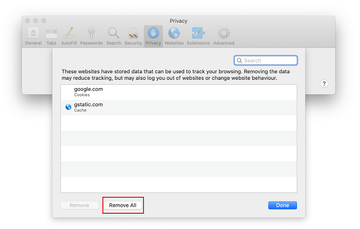
Restart Safari
- Remove ib-search in Google Chrome
Open Chrome, click the Customize and control Google Chrome (⁝) icon in the top right-hand part of the window, and select Settings in the drop-down
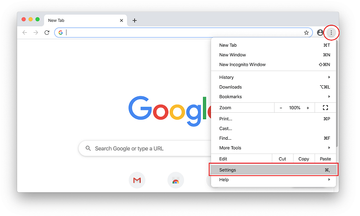
When on the Settings pane, select Advanced
Scroll down to the Reset settings section.
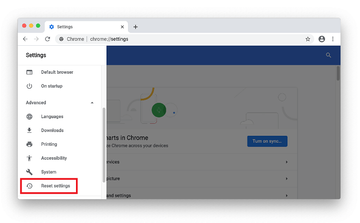
Confirm the Chrome reset on a dialog that will pop up. When the procedure is completed, relaunch the browser and check it for malware activity.
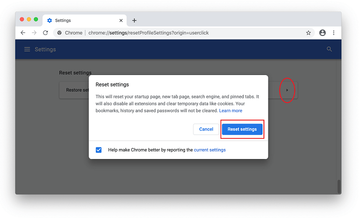
- Remove ib-search from Mozilla Firefox
Open Firefox and go to Help – Troubleshooting Information (or type about:support in the URL bar and press Enter).
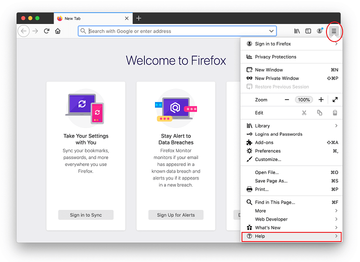
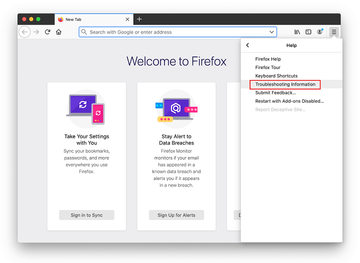
When on the Troubleshooting Information screen, click on the Refresh Firefox button.
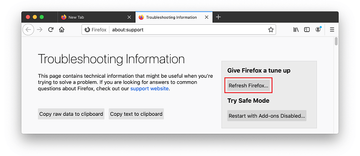
Confirm the intended changes and restart Firefox.
Get rid of ib-search virus using Combo Cleaner removal tool
The Mac maintenance and security app called Combo Cleaner is a one-stop tool to detect and remove ib-search virus. This technique has substantial benefits over manual cleanup, because the utility gets hourly virus definition updates and can accurately spot even the newest Mac infections.
Furthermore, the automatic solution will find the core files of the malware deep down the system structure, which might otherwise be a challenge to locate. Here’s a walkthrough to sort out the ib-search issue using Combo Cleaner:
Download Combo Cleaner installer. When done, double-click the combocleaner.dmg file and follow the prompts to install the tool onto your Mac.
By downloading any applications recommended on this website you agree to our Terms and Conditions and Privacy Policy. The free scanner checks whether your Mac is infected. To get rid of malware, you need to purchase the Premium version of Combo Cleaner.
Open the app from your Launchpad and let it run an update of the malware signature database to make sure it can identify the latest threats.
Click the Start Combo Scan button to check your Mac for malicious activity as well as performance issues.

Examine the scan results. If the report says “No Threats”, then you are on the right track with the manual cleaning and can safely proceed to tidy up the web browser that may continue to act up due to the after-effects of the malware attack (see instructions above).
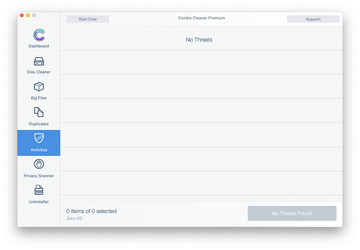
In case Combo Cleaner has detected malicious code, click the Remove Selected Items button and have the utility remove ib-search threat along with any other viruses, PUPs (potentially unwanted programs), or junk files that don’t belong on your Mac.
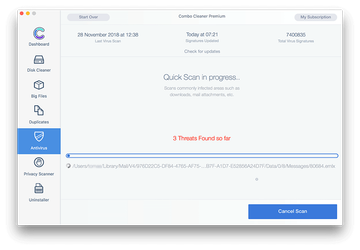
Once you have made doubly sure that the malicious app is uninstalled, the browser-level troubleshooting might still be on your to-do list. If your preferred browser is affected, resort to the previous section of this tutorial to revert to hassle-free web surfing.
